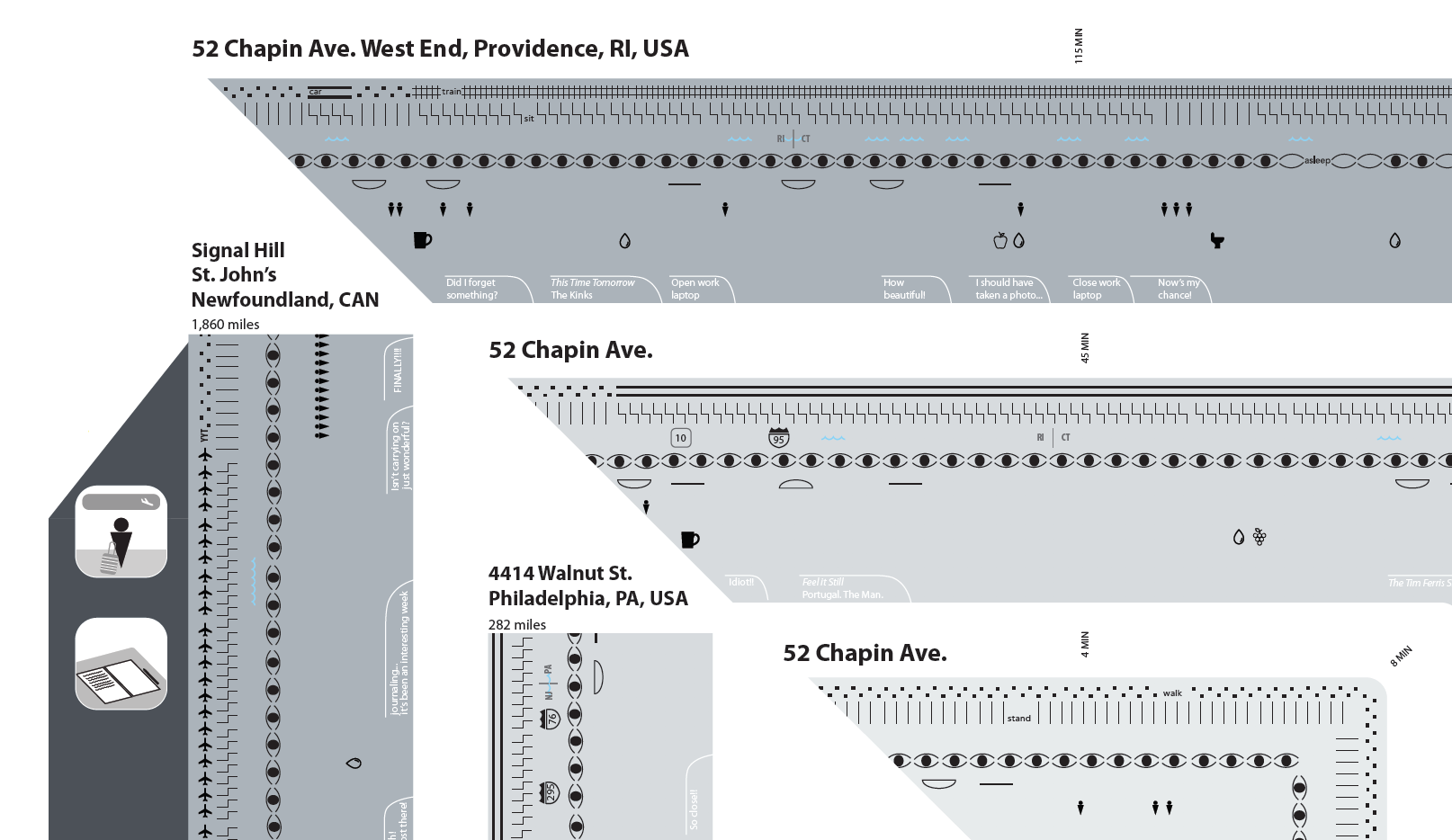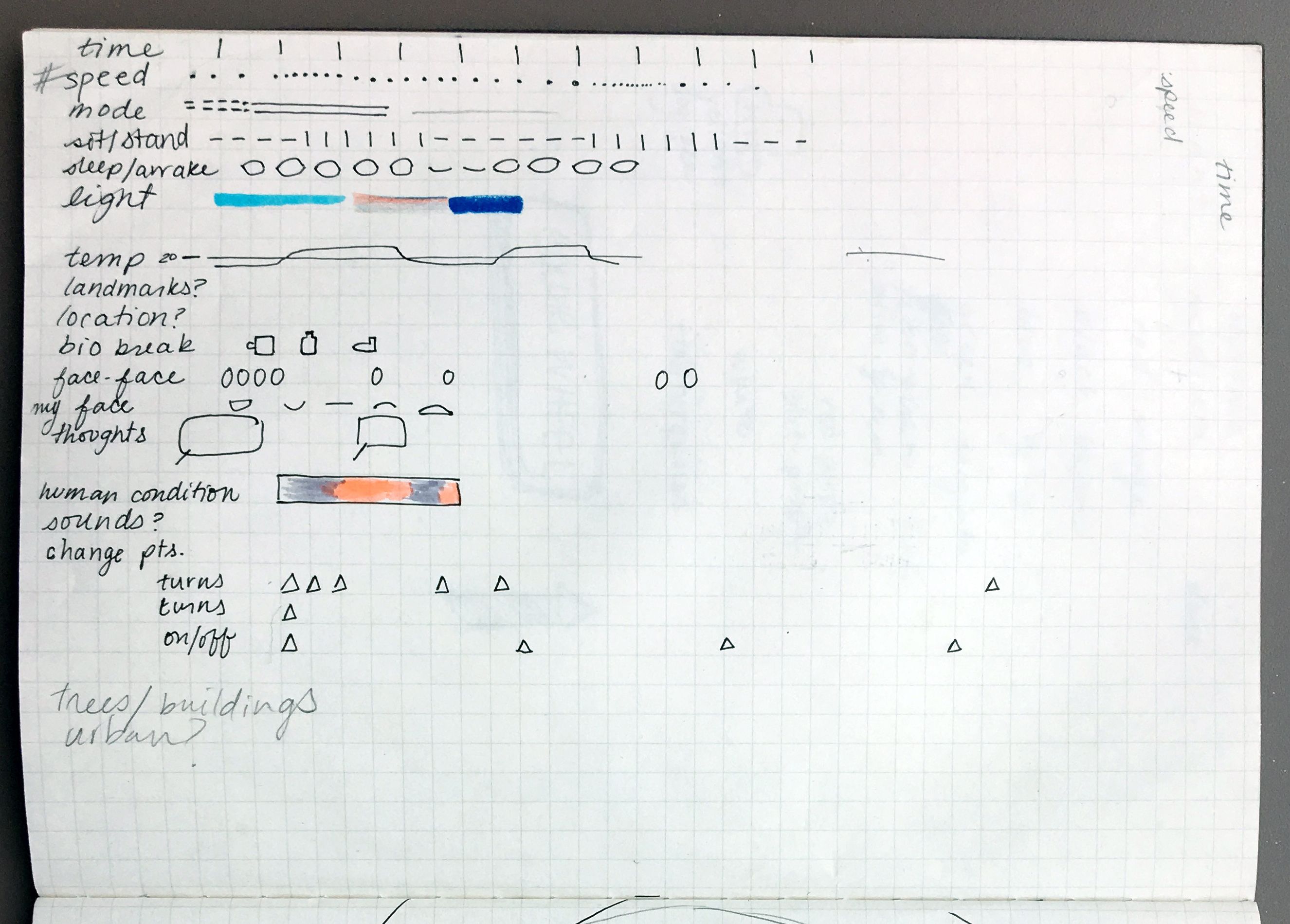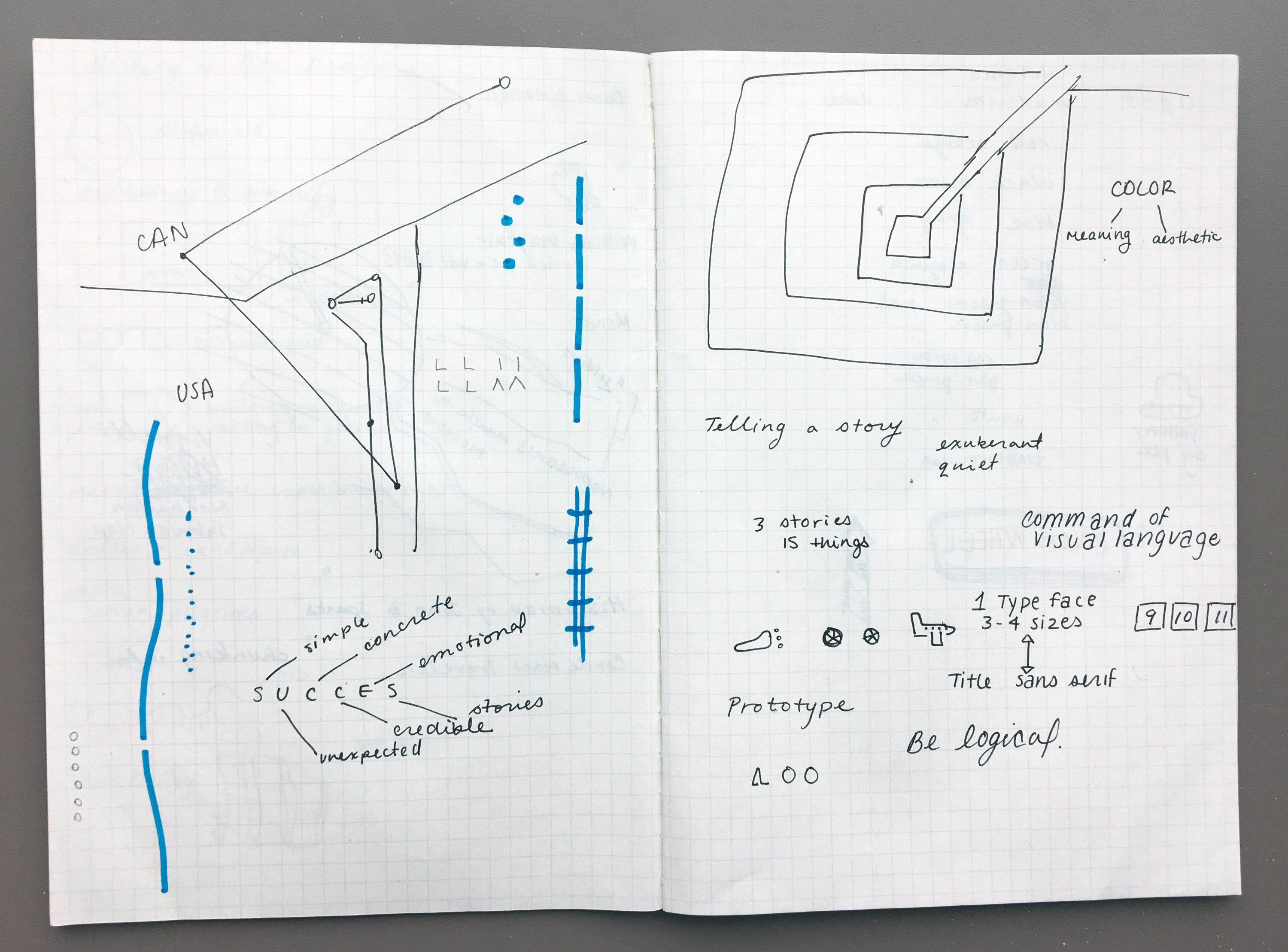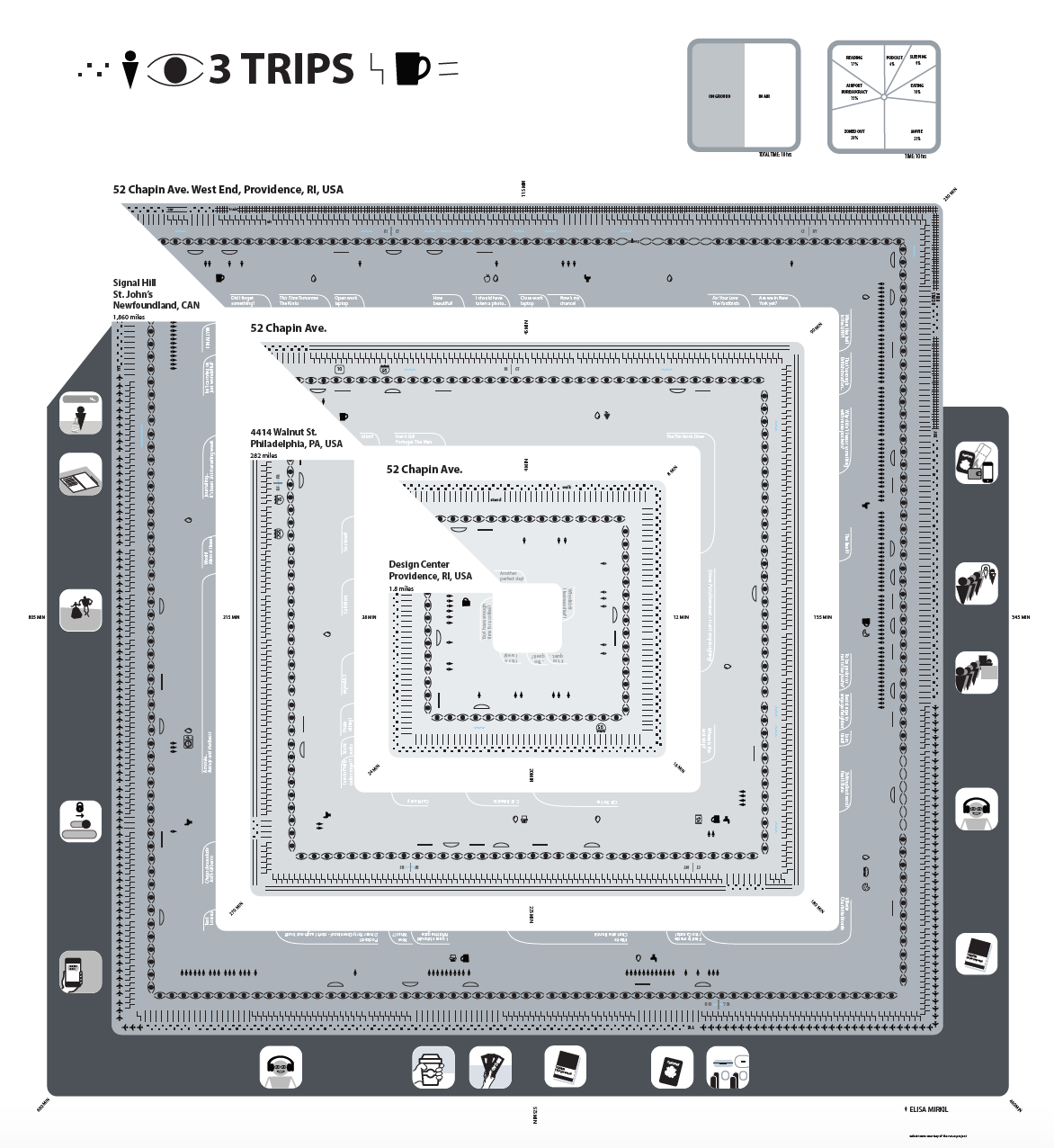Transforming data with design
3 Trips, A Data Story: An abstraction of data and experience

This project was assigned by Douglass Scott at RISD’s summer session in Information Design in July 2017. I captured and visualized the data for 3 trips from my address in Providence to the RISD campus, my apartment, and traveling to Newfoundland, Canada.
The print measures 31 by 34 inches.
PROCESS:
STEP 1: Making sense of the data
Travel (as the act of getting from point A to B) is a good example of an experience in which the individual does not think in terms of statistics or data. It’s simpler—is my flight late? Is it raining or cold? Am I lost?
 Brainstorming data points
Brainstorming data points
When converting the experience into data points, it is shocking to realize all of the measurable components and attempt to find insights.
 Summarizing data
Summarizing data
STEP 2: Reconciling the data and the experience
Once we have data in hand, it’s easy to forget the experience that created it. My goal was to analyze and present the data in a way that reflects the truth of travel—there are several routine activities—thinking, using the bathroom, eating—while distance and location rapidly change.
 “A typical travel experience”
“A typical travel experience”
Creating a symbolic language that could be repeated was my way of expressing this dynamic routine.
 Legend
Legend
STEP 3: Composing the data
I am always struck by the feeling of suspended animation when traveling, especially by plane. By being between two places, it feels like being nowhere.
 Early compositions
Early compositions
Therefore, a spiral driven around by the patterns of data with small points of reference proved an effective way to emphasize and compare the process of travel rather than highlight the narrative of a journey from origin to destination.


